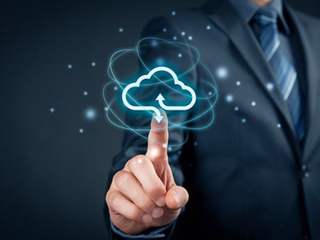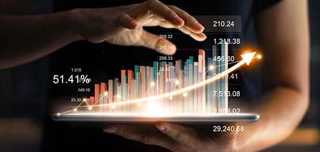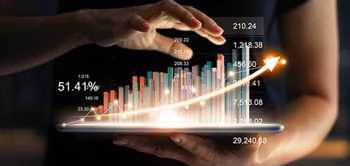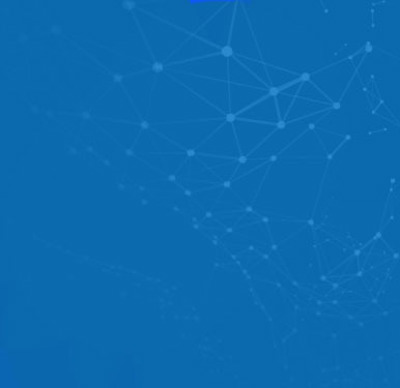Such a domestic remittances and payment system can play a significant role in poverty reduction by improving consumption decisions as well as the ability to invest in human and physical capital at lower risk. There are numerous international examples of how payments system innovations have made signal contributions to financial inclusion in the process of development. And payments systems are often the entry point to the delivery of a comprehensive suite of financial services that can enhance household welfare, particularly for poor households.
India is a large country by any measure. For all countries, and more so for a large country with a population that is increasingly on the move, an efficient, low-cost, reliable, and universally accessible remote payments system that links all parts of the country is vital to spur economic activity, to create opportunity, and to improve well-being.
In 2018, up to 80% of Indians now have a bank account, the same proportion that have a mobile phone, but financial inclusion levels are still among the world’s worst, lower than sub-Saharan Africa on some count. According to the World Bank 2018 report, in India, the share of dormant account is 48 per cent – the highest in the world and about twice the average of 25 percent for developing economies.
In India, majorly in rural India people are unable to take benefits of basic banking system and the major requirement of rural India is to receive remittance from urban India.
History of Payment System in India
Though cheque clearing was made efficient through MICR clearing, the inherent issues with cheques posed challenges especially when they were being used for bulk and repetitive payments such as collection of utility payments, payment of dividends, etc.
To address this growing need and also to reduce the use of cheques for such payments, the Electronic Clearing Service(ECS) was introduced in early 1990s, ECS Credit to facilitate one-to-many payments such as dividend, salary, interest payments, etc. and ECS Debit to facilitate many-to-one payments such as utility payments.
Current Scenario
There are 120 million migrant workers in India, and more than 80% live in the inadequately connected rural areas. Additionally, migrants who hail from villages but work in towns and cities make 80% of the country’s domestic remittances.
According to the National Remote Payments Survey by National Council of Applied Economic Research, and additional insights using Nielsen’s forecasting technique, domestic remittance in India is valued at more than Rs. 900 billion per year, including non-traditional modes of transfer. Rural India’s contribution is over Rs. 700 billion per year.
Of the Rs. 700 billion worth of domestic remittances that happen in rural India, traditional channels comprise a mere 40%, or Rs. 300 billion. The rest of the remittance happens via non-traditional remittance modes. Given the high risk of non-traditional remittance modes, there is a huge scope to expand traditional remittance avenues like payments banks.
About Rs 5,000-6,000 crore remittances take place a month with an average ticket size of Rs 4,000.
According to the research done by Nielsen in 2018,
- 86% of households to which money is remitted are based in rural areas.
- States like Bihar and Uttar Pradesh together accounts for 60% of money received through remittances. Other key receiver regions are Andhra Pradesh, Odisha, Jharkhand and Chhattisgarh.
- The top regions which send money through remittances include cities like Mumbai, Delhi and Kolkata, where the maximum number of migrants resides. The top states which remit money through payment banks are Gujarat, Maharashtra and Punjab.
- Kerala and Tamil Nadu are the new migrant destinations which can remit money through these payment banks in the future.
SERVICES
The services which are available to people are
DTH services
Indian Direct-To-Home (DTH) market is projected to exhibit a CAGR of around 10% from 2019-2023, on the back of increasing government efforts towards encouraging the adoption of set-top box services.
Tour Package and hotel booking
India is the most digitally-advanced traveller nation in terms of digital tools being used for planning, booking and experiencing a journey, India’s rising middle class and increasing disposable incomes has continued to support the growth of domestic and
Mobile recharge services and bill payment
Mobile bill payment is the most frequent activity on e-wallet apps. When it comes to spending by value, mobile payment (28%), online shopping (21%) and utility payment (16%) are the biggest spend areas.
Money Remittances/transfer
Money remittances in developing countries like India are expected to grow by 5 per cent every year (The annual domestic remittance stood at INR 700 in 2016 and was expected to reach INR 1110 billion by 2021,
Trends of Digital payments
- India’s payment system – particularly, its digital payments system – has been evolving robustly over the past many years, spurred by developments in information and communication technology, and fostered and in consonance with the path envisioned by the Reserve Bank of India.
- As part of this vision, the National Payments Corporation of India (NPCI) was established in 2008–has been spearheading the development of the retail payments system.
- Important milestones attained in this overall process of development of the payments system include the introduction of MICR clearing in the early 1980s, Electronic Clearing Service and Electronic Funds Transfer in the 1990s, issuance of credit and debit cards by banks in the 1990s, the National Financial Switch in 2003 that brought about interconnectivity of ATMs across the country, the RTGS and NEFT in 2004, the Cheque Truncation System (CTS) in 2008, the second factor authentication for the ‘card not present’ transaction in 2009 and the new RTGS with enhanced features in 2013.
Trends during 2016-17 and 2017-18 which can Impact the coming 5 years
Volume
The year-on-year (y-o-y) growth of digital payments in 2017-18 was of the order of 44.6% which was nearly double the CAGR growth in volume for the period 2011-2016.
Value
The total value of payments in 2016-17 Rs. 2258780.5 (Bn). This increased to Rs. 2527539.2 (Bn) by registering a growth of 11.9% in 2017-18.
Future of Payment System in India
The total digital payment market in India will grow to US$1 trillion by FY23 led by the growth in mobile payments. Mobile payments are expected to grow from US$10 billion in FY18 to US$190 billion by FY23. These estimates however include only 5 instruments which are: IMPS, Prepaid Instruments, UPI, ECS / NACH and online spends. The following developments are expected to contribute to the growth of Digital Payments in the country.
The Digital Payments ecosystem in India is undergoing a transformation with the entry of global tech giants that are acting as aggregators for retail transactions. Within just four months of launch, Google’s payments app is now already processing a large number of digital transactions.
While the number of PoS terminals has doubled since demonetization, the merchant acquisition infrastructure in India remains weak, as banks have not been able to drive adoption. This sector presents immense opportunities for digital players.
Time is of the essence in building good relationships. And it doesn’t matter. It will be a relationship at work or with a family or a relationship with a soul mate. A life partner is a person that you choose to share your life with on a long–term basis. They are not merely a romantic partner, but a lifelong companion and confidant. A life partner is someone who you feel close to and trust to be with you through thick and thin. More about it in this article














